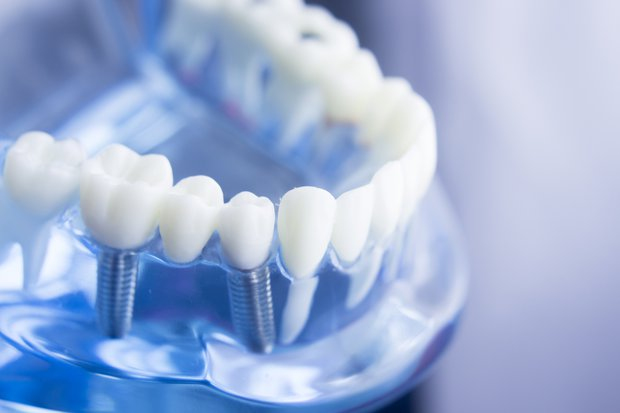
Due to different causes, the posterior areas of the mandible are often related with scarce bone volume. The proposed solution is a screw retained dental prosthesis system, developed for the oral rehabilitation of these locations, in the clinical situations where it is possible to place, at least, two short or extra-short dental implants. The reduced vertical bone volume results in an increased crown height space with deleterious effects at the marginal bone level. Thus, this prosthetic concept represents a bone protective solution.
The oral rehabilitation of the posterior areas of the mandible is particularly challenging, due to the bone remodelling that occurs after teeth extractions, worsened or not by the use of removable dentures.
There are three possible approaches: the all-on-four or trefoil concept; the use of short implants and bone augmentation surgical procedures.
The all-on-four solution implies the extraction of the anterior teeth, which may be in a good condition.
As for the bone augmentation surgical procedures, that would allow for the placement of conventional dental implants to support a dental prosthesis, these are technical sensitive, invasive, time consuming and morbidity related procedures. Moreover, some authors report that the implant success rate in grafted bone is lower than in autologous bone.
Finally, short implants, placed in the available bone above the mandibular canal, are a fast and minimally invasive procedure where the implants are placed in autologous bone. However, it also results in an increased crown height space what is related to marginal bone loss and an increased frequency in the prosthetic components failures.
Taking into account that clinicians and patients would prefer simpler, faster, cheaper and more straightforward solutions, this new dental prosthesis system was developed. After an extensive analysis of which were the decisive factors for the durability of the implant and the bone protective effect, it was clear that the most important role was played by the crown height space.
So, the proposed solution was to modify the prosthesis traditional geometry in order to decrease the stress computed in the marginal bone. This modification acted directly in the increased crown height space resulting in a bone protective effect, when the use of at least two short implants is the choice for an oral posterior mandible rehabilitation.
This invention represents a new and minimally invasive concept for the oral rehabilitation of the mandible posterior areas when the bone volume is scarce but enough to place short implants. This way, it is an alternative to the surgical procedures that intend to regenerate the lost bone volume and avoids healthy teeth extractions.
It assumes that the so-called crown height space is increased when compared with the average measurement of the anatomical crowns of the natural teeth that are going to be replaced. Nevertheless, it may be considered for the application in different types of edentulism.
Due to the configuration of the prosthetic system, and because the applied load during the masticatory function generates stresses potentially higher than bone’s yield strength, the entire system has a bone protective effect, allowing for the marginal bone crest maintenance over time, the success of the dental implants and therefore, the success of the rehabilitation.
This invention relates to the technical field of dental prostheses and more specifically a new concept of dental prostheses for oral rehabilitation of the mandible posterior areas.
A proteção dos direitos de propriedade industrial é cofinanciada por:






